#sergio amidei
Explore tagged Tumblr posts
Text

STROMBOLI (1950)
Director: Roberto Rossellini
Writers: Roberto Rossellini, Sergio Amidei
Stars: Ingrid Bergman, Mario Vitale, Renzo Cesana.
5 notes
·
View notes
Link
MOVIE/ ROMA CITTA’ APERTA LE RIPRESE INIZIARONO NELLA NOTTE TRA IL 17 E IL 18 GENNAIO
0 notes
Text
Sabato 30 novembre a Gorizia - Assegnazione del Premio Sergio Amidei alla Cultura Cinematografica 2024.
Programma:
17.30 - proiezione de “I nomi del signor Sulčič”
20.00 - premiazione e incontro con Elisabetta Sgarbi, modera il giornalista Gian Paolo Polesini
a seguire
proiezione de “Il viaggio della signorina Vila” e “L’altrove più vicino. Un viaggio in Slovenia”









0 notes
Text
Il grande giornalista, saggista e sceneggiatore romano, esperto di terrorismo, intelligence, mafie e criminalità organizzata, compirebbe settantuno anni. Nato a Roma il 1° febbraio 1953 - è morto il 19 luglio 2023 dopo una breve malattia -, giornalista professionista dal ’74, Andrea Purgatori consegue il master of Science in Journalism presso la Columbia University di New York nel 1980. Inviato del «Corriere della Sera» per circa venticinque anni (dal 1976 al 2000), è noto per le sue numerose inchieste e reportages su casi scottanti del terrorismo internazionale italiano dei cosiddetti “anni di piombo” e sullo stragismo, come il caso Moro (1978) e la strage di Ustica (1980 - A. Purgatori è stato il giornalista d’inchiesta che più di ogni altro si è battuto per la ricerca della verità sulla strage di Ustica). Ha raccontato molti delitti da mafia dal 1982 fino alla cattura di Totò Riina (1993). Ha realizzato reportages su numerosi conflitti, fra cui la guerra in Libano (dal 1982 al 1985), la guerra fra Iran e Iraq (1980-88), la prima guerra del Golfo (1991), l’intifada e le rivolte in Tunisia e in Algeria. Oltre che per il «Corriere della Sera», ha scritto per «l’Unità», «Vanity Fair», «The Huffington Post», «Le Monde diplomatique». Ha collaborato fino all’ultimo con il «Corriere della Sera» e «Style». È stato autore e conduttore di Uno di notte (1998). Ha realizzato servizi televisivi per Dossier, Spazio Sette, Focus (RaiDue 1978-88). In tv ha condotto anche Confini (1996, RaiTre). Ha scritto molte fiction per la tv - Caravaggio (2008), Lo scandalo della Banca Romana (2010), Il commissario Nardone (2012), Lampedusa (2016). Per la saggistica ha scritto A un passo dalla guerra (1995), Il bello della rabbia (1997), I segreti di Abu Omar (2008). Nel 2019 ha pubblicato il romanzo Quattro piccole ostriche (HarperCollins). Per il cinema ha scritto Il muro di gomma (1991) di Marco Risi, dedicato alla sua inchiesta sulla strage di Ustica, Il giudice ragazzino (1994) di Alessandro Di Robilant - film sulla vita del giudice siciliano Rosario Livatino (1952-1990) dal suo ingresso in magistratura al suo impegno nella lotta alla mafia fino al suo assassinio -, L’industriale (2011) di Giuliano Montaldo. Ha vinto, fra gli altri, il Nastro d’Argento per il Miglior Soggetto con Il muro di gomma, il Premio Hemingway per il giornalismo (1993), il Premio Crocodile - Altiero Spinelli per il giornalismo (1992), il Globo d’Oro (1994) per la Miglior Sceneggiatura di Il giudice ragazzino e il Premio Sergio Amidei (2009), con Marco Risi e Jim Carrington per la Migliore Sceneggiatura Internazionale di Fortapasc (2009) di M. Risi, film sulla vita e la tragica fine del giornalista Giancarlo Siani (1959-1985). Nel 1987, oltre a partecipare al soggetto ed alla sceneggiatura del film Spettri di Marcello Avallone, vi appare come attore. Nel 2002 partecipa al programma televisivo Il caso Scafroglia (RaiTre), interpretando la voce off che dialoga con il conduttore (Corrado Guzzanti), mentre nel 2006 prende parte al film Fascisti su Marte di C. Guzzanti e Igor Skofic. Sempre con C. Guzzanti ha realizzato Aniene (SkyUno). È stato coatore del programma tv di Antonio Albanese Non c’è problema (2002, RaiTre). Dal maggio 2014 al giugno 2020 è stato presidente di Greenpeace Italia. È stato membro dell’Accademia del Cinema Italiano e dell’Accademia Europea del Cinema, presidente delle Giornate degli Autori e, dal marzo 2015, membro del Consiglio di Gestione della SIAE (Società Italiana degli Autori e Editori). Dalla stagione 2017/18 ha condotto la nuova edizione di Atlantide (La7), per cui riceve il Premio Flaiano (2019) come Miglior Programma Culturale. Fra i sui ultimi lavori, nell’autunno 2022, la docu-serie Netflix Vatican Girl: la scomparsa di Emanuela Orlandi. Nel 2018 Andrea Purgatori ha partecipato, con una sua preziosa testimonianza, alla realizzazione del libro fotografico Aldo Moro. Memoria, politica, democrazia
(Archivio Riccardi, 2018), da cui è tratta la mostra fotografica omonima, formata da oltre cento scatti del grande fotografo Carlo Riccardi (1926-2022).
0 notes
Text
Premio Amidei 'Indipendente', sette sceneggiature in corsa
(ANSA) – UDINE, 07 LUG – E’ “Indipendente” il tema della 42/a edizione del Premio internazionale alla migliore sceneggiatura Sergio Amidei, palcoscenico della cultura cinematografica internazionale che celebra il cinema scritto nel solco del noto sceneggiatore e produttore cinematografico scomparso nel 1981. In programma a Gorizia dal 20 al 26 luglio, la manifestazione è organizzata…
View On WordPress
0 notes
Photo

Movie #64 of 2020: Paisan
“If you fall asleep, I’ll steal your shoes.”
#paisan#roberto rossellini#italian#english#drama#war#sergio amidei#federico fellini#klaus mann#marcello pagliero#alfred hayes#rod e. geiger#vasco pratolini#renzo rossellini#otello martelli#eraldo da roma#german#sicilian#35mm#1946#64#great
7 notes
·
View notes
Photo

maciste all’inferno (1925)
0 notes
Photo

Stromboli
#stromboli#random richards#poetry#poem#poetic#haiku poem#haiku poetry#haiku#daily haiku#haiku on tumblr#ingrid bergman#roberto rossellini#criterion collection#Mario vitale#Sergio Amidei#Gian Paolo CallegarikArt Cohn#Renzo Cesana#Felix morlion
2 notes
·
View notes
Photo
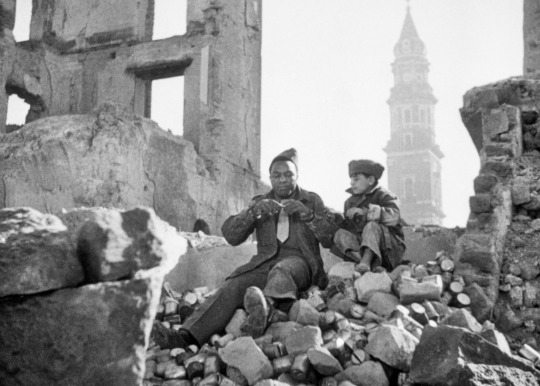
Dots Johnson and Alfonsino Pasca in Paisan (Roberto Rossellini, 1946)
Cast: Carmela Sazio, Robert Van Loon, Harold Wagner, Merlin Berth, Mats Carlson, Dots Johnson, Alfonsino Pasca, Maria Michi, Gar Moore, Harriet Medin, Renzo Avanzo, William Tubbs, Dale Edmonds. Screenplay: Sergio Amidei, Klaus Mann, Federico Fellini, Marcello Pagliero, Alfred Hayes, Roberto Rossellini, Rod E. Geiger. Cinematography: Otello Martelli. Film editing: Eraldo Da Roma. Music: Renzo Rossellini.
The phrase "fog of war" was coined by Carl von Clausewitz in reference to the cloud of uncertainty that surrounds combatants on the battlefield, but it seems appropriate to apply it to the miscommunication experienced by the soldiers and civilians in Roberto Rossellini's great docudrama about the Allied campaign to liberate Italy in 1943 and 1944. The six episodes in Rossellini's film illustrate various kinds of problems brought about by language, ignorance, naïveté, and lack of necessary information. A young Sicilian woman (Carmela Sazio) struggles to communicate with the G.I. (Robert Van Loon) left guarding her; a Black American soldier (Dots Johnson) tries to recover the shoes that were stolen from him by a Neapolitan street urchin (Alfonsino Pasca) after he got drunk and passed out; a Roman prostitute (Maria Michi) picks up a drunk American (Gar Moore), but when he tells her of the beautiful, innocent woman he met six months earlier in Rome she realizes that she was the woman; an American nurse (Harriet Medin) accompanies a partisan into the German-occupied section of Florence in search of an old lover; three American chaplains visit a monastery in a recently freed section of Northern Italy, but only the Catholic chaplain (William Tubbs), who speaks Italian, realizes that the monks are deeply shocked that his two companions are a Protestant and a Jew. Only the final -- and the best, most harrowing -- section deals with the traditional concept of the fog of war, as Allied soldiers try to aid Italian partisans in their fight with the retreating but still fierce Germans. As in many Italian neorealist films, the actors are either non-professionals or unknowns, and their uneasiness with scripted dialogue sometimes shows -- at least it does with the English speakers; I can't judge the ones who speak Italian or German. There is also occasional sentimental overuse of the score by the director's brother, Renzo Rossellini. But on the whole, Paisan is still an extraordinarily compelling film, an essential portrait of war and its effects, made more essential by having been filmed on location amid the ruin and rubble so soon after the war ended. Glimpses of the emptied streets of Florence, bare of tourists and trade, are startling, as are the scenes that take place in the marshlands of the Po delta in the final sequence. The screenplay earned Oscar nominations for Alfred Hayes, Federico Fellini, Sergio Amidei, Marcello Pagliero, and Roberto Rossellini, but lost to Robert Pirosh for the more conventional war movie Battleground (William A. Wellman, 1949).
7 notes
·
View notes
Photo

General Della Rovere (1959). Bardone, a petty con man, is arrested by the Gestapo and coerced into impersonating a partisan leader in order to expose another resistance organizer.
This is a solid film about the ethics of bystanders, and what happens to a criminal when a case of mistaken identity leads him to a moral quandary. It’s compelling, well-directed, and performed, and well-worth the watch. 7.5/10.
#general della rovere#1959#Oscars 34#Nom: Story and Screenplay#Nom: Original Screenplay#Roberto Rossellini#Sergio Amidei#Diego Fabbri#Indro Montanelli#Vittorio De Sica#Hannes Messemer#italy#italian#world war ii#war#mistaken identity#7.5/10
0 notes
Text
IL TSFF DEI PICCOLI PER IL PREMIO SERGIO AMIDEI
IL TSFF DEI PICCOLI PER IL PREMIO SERGIO AMIDEI
Quest’anno Alpe Adria Cinema – Trieste Film Festival collabora con il Premio Sergio Amidei in occasione di “Amidei Kids”, una sezione dedicata al pubblico di bambini e ragazzi pensata per avvicinare i giovani spettatori alla magia del cinema. Da questa edizione, la sezione esplorerà anche il cinema d’animazione di produzione balcanica ed est-europea grazie alla partnership con il TSFF dei…

View On WordPress
0 notes
Photo

Life Under Nazi Occupation by Pablo Kjolseth
I can’t imagine what it would be like to try writing a script while Nazi’s occupied my city. But that’s what Roberto Rossellini did, along with his co-writers Sergio Amidei, Federico Fellini and Alberto Consiglio for ROME, OPEN CITY (’45). A scant few months after the June 4, 1944 liberation of Rome, he managed to launch the production by scrounging money, electricity and film by any means possible. The dubious quality of the scraps of film they were able to procure added grain and different exposure speeds to the mix. When they couldn’t get film or money, work came to stop. Despite several gaps in shooting, all that was done between January and June of 1945 finally resulted in a finished piece – one too raw for the distributor who had originally offered up a minimum guarantee for its completion. Instead, the contract was declared null and void because the distributor claimed that what Rossellini had delivered to him was not a film.
Heavily in debt, Rossellini was fortunate enough to eventually find a buyer and ROME, OPEN CITY was screened at the first Cannes Film Festival during a 3:00pm slot where Rossellini claims “I may have been the only one in the audience.” But then later in Paris, then Italy, then the U.S., his movie not only met with success, it established neorealism as the most important and influential style of the postwar era. It put Rossellini in the global spotlight and launched his career.
ROME, OPEN CITY was not the first neorealist film, as that honor goes to D.W. Griffith’s ISN’T LIFE WONDERFUL (’24), which was shot on the streets of Germany with many non-professionals and during a time of “disastrous postwar hyperinflation (where a bushel of banknotes might buy a loaf of bread; the exchange rate in 1923 rose to 4.2 trillion marks per dollar)” (A Short History of the Movies). But ROME, OPEN CITY certainly caused such a big splash that,
Open City became the unofficial cornerstone of a new movement in Italian cinema – Neorealism, a “new realism” characterized by the use of nonprofessional actors and realistic dialogue, an emphasis on the everyday struggles of common people and the unvarnished look of non-studio reality, and the determination to present the characters in relation to their real social environments and political and economic conditions. (Ibid.)
The title was originally going to be A STORY OF YESTERDAY, then CLOSED CITY, but “Open City” was a military term referring to cities that were to be spared air raids, bombings and combat due to important or revered sites. A factor that should have spared the site of St. Peter’s Basilica and the Sistine Chapel, but Rome was bombed and the destruction of these attacks is clearly on display in the destroyed buildings that can be seen in the background of the film. The other notion behind “open” is that it denotes freedom – as in freedom to shoot a film outdoors and wherever you want, as well as a city open to the future with hope for children (Rossellini loved children).
In telling the story of Nazi occupied Rome, one where Romans deal with curfews, food rations and Nazi’s who use torture on anyone involved with the resistance, Rossellini did use some professional actors. Aldo Fabrizi, who plays the priest Don Pietro Pellegrini, was cast against type (his previous work was mostly in comedies). Fellini brokered the deal by convincing Fabrizi to take the role for a pittance of what he normally commanded. Anna Magnani was previously known to Italian audiences for her roles in “White Telephone” pictures (these being escapist movies that take place in fancy apartments decorated with white telephones which were quite the luxury at the time).
In ROME, OPEN CITY, her performance as Pina, a widowed and pregnant mother about to marry her atheist neighbor, was such an electrifying performance it completely re-branded her. One moment, she was known in Italy as someone who played small parts such as singers and vaudeville performers, the next she became the face of fierce resistance in the fight against fascism. She and Rossellini would later become famous lovers, albeit that relationship was later eclipsed by the drama that was the romance between Rossellini and Ingrid Bergman (and thank goodness for that one, as it gave Isabella Rossellini to the world).
Before ROME, OPEN CITY, Rossellini had directed three propaganda films. His decision to give voice to the Italian Resistance was a transformative one. “After all we’d seen and been through, the destruction of war, we couldn’t afford the luxury of making up fictional stories.” This drive for authenticity respected the geography of the city. It’s opening shot and closing shot both show us the dome of St. Peter’s as the center of Rome, but the opening shot is from around the Piazza di Spagna whereas the closing shot is filmed from the opposite side of the city – thus forming two semicircles to complete the circle.
There is also something in the idea of an Italian film showing us a priest and a communist, who traditionally were seen as being in opposite camps, here coming together as cinematic equals. To give Rossellini the last word: “Yes, it is necessary for the cinema to teach men to know themselves, to recognize themselves in others instead of always telling the same stories.”
#FilmStruck#Roberto Rossellini#Rome Open City#Anna Magnani#Criterion Collection#StreamLine Blog#Pablo Kjolseth#Italian neorealism#Italian Cinema
107 notes
·
View notes
Photo
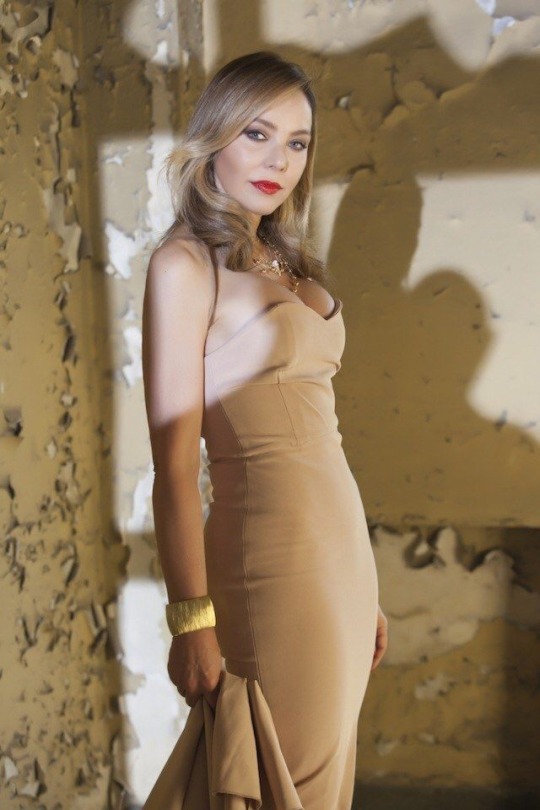

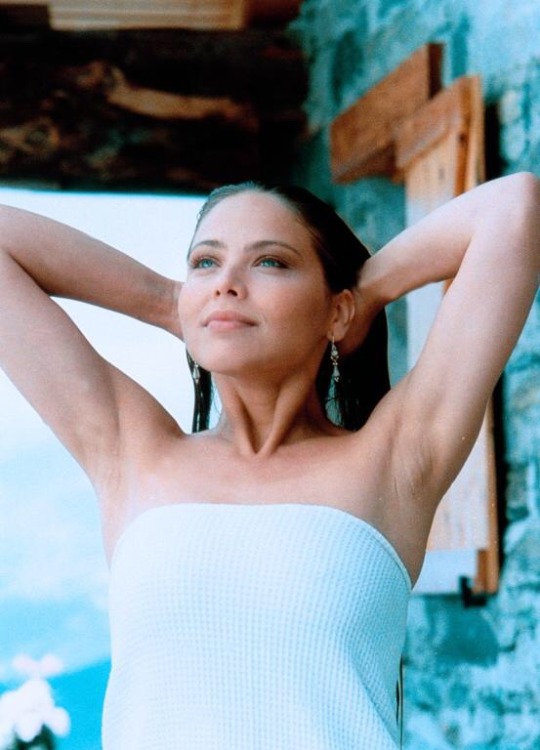


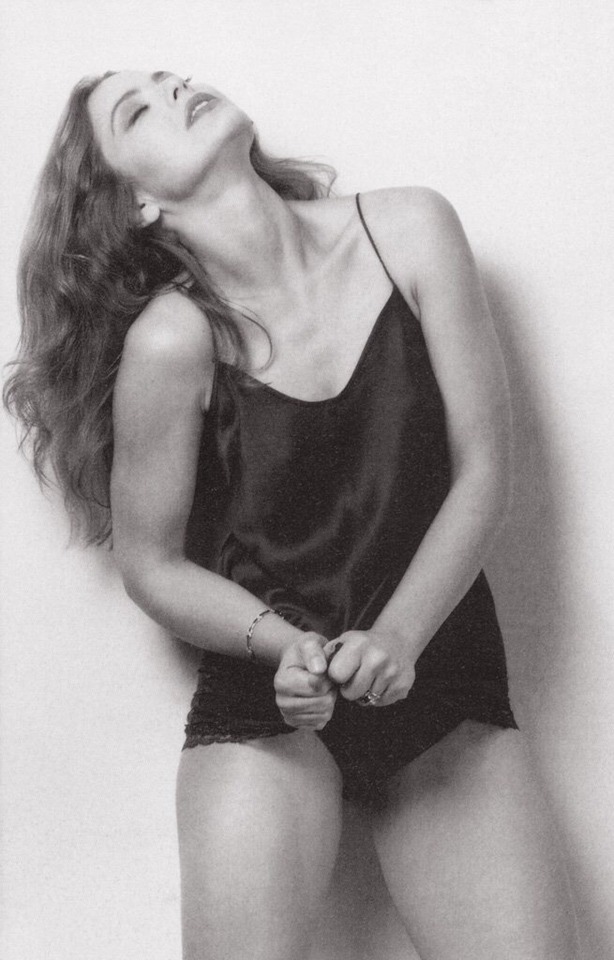
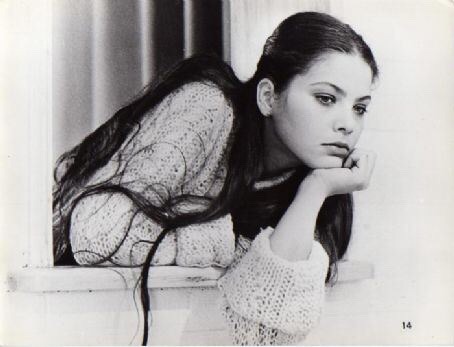


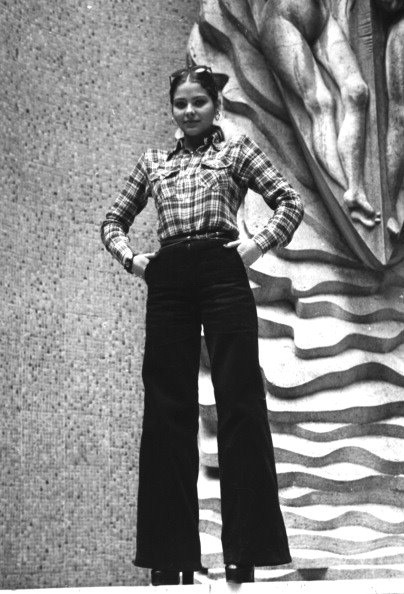
Happy Birthday/Buon Compleanno to ... The Most Beautiful Girl... in the World! Ornella Muti Born Francesca Romana Rivelli 9 March 1955 in Rome, Italy 🇬🇧Muti modeled as a teenager and made her film debut in 1970 in La Moglie piu bella (aka The Most Beautiful Wife). She has primarily worked in Italian films but she made her English-speaking film debut as Princess Aura in Flash Gordon in 1980. American movies she appeared in include Love and Money (1982), Casanova (1987), Wait Until Spring Bandini (1989), A Season of Giants (1990), Oscar (1991), Once Upon A Crime (1992), Somewhere in the City (1998) and To Rome with Love (2012). She is mostly known to the French for appearing in a television commercial of Giovanni Panzani pasta. She was voted "The Most Beautiful Woman in the World" in 1994 by a worldwide poll of readers of the magazine Class 🇮🇹 Il suo esordio nel cinema avvenne quando aveva 14 anni, nel 1969: fu scelta da Damiano Damiani come protagonista del suo film La moglie più bella, ispirato alla vicenda di Franca Viola, di Alcamo in Sicilia, che nel 1965, appena diciassettenne, fu la prima donna italiana a rifiutare il matrimonio riparatore. Damiani le impose un nome d'arte con reminiscenze dannunziane (Ornella è un personaggio de La figlia di Jorio, Elena Muti è la protagonista de Il piacere), anche perché già esisteva un'attrice con il suo stesso cognome, Luisa Rivelli L'esordio le procurò parti in numerosi film sia in Italia sia all'estero (ad esempio Il sole nella pelle del 1971 e Un posto ideale per uccidere di Umberto Lenzi, mentre in Spagna girò Un solo grande amore, Esperienze prematrimoniali, La segretaria, L'amante adolescente) e in fotoromanzi, nei quali è accreditata come Francesca Rivelli, insieme con la sorella. L'incontro professionalmente più importante avvenne nel 1974, anno in cui girò Romanzo popolare di Mario Monicelli, nel ruolo della bella e giovane Vincenzina (durante le riprese era incinta), con Ugo Tognazzi nei panni dell'operaio milanese Basletti. Il film ebbe un notevole successo e le diede notorietà. Prese parte poi ai film: Come una rosa al naso di Franco Rossi, a fianco di Vittorio Gassman; La stanza del vescovo e Primo amore, entrambi di Dino Risi, nuovamente al fianco di Ugo Tognazzi; I nuovi mostri di Monicelli-Risi-Scola, candidato al Premio Oscar come Miglior film straniero nel 1979 L'ultima donna di Marco Ferreri, nel 1976, con Gérard Depardieu Con Ferreri girò nel 1981 Storie di ordinaria follia, tratto da una sceneggiatura scritta dallo stesso regista e da Sergio Amidei a partire dall'omonimo romanzo di Charles Bukowski. Il film, ambientato a Los Angeles e girato negli stessi luoghi nel 1980, uscì nelle sale l'anno successivo e fu invitato al Festival di Venezia. Il personaggio della Muti è Cass, una giovane prostituta autolesionista e bellissima, vittima di una bellezza che la soverchia e non le consente di essere amata per quello che sente di essere Partecipò al kolossal statunitense Flash Gordon nella versione di Mike Hodges, nella parte della perfida Principessa Aura, e al thriller Per amore e per denaro di James Toback. Girò diversi film di produzione statunitense, rifiutando il ruolo di protagonista, poi affidato a Carole Bouquet), in Agente 007 - Solo per i tuoi occhi perché il suo costumista, Wayne Finkelman, non era stato ingaggiato dalla produzione.Nello stesso periodo, con Adriano Celentano girò Il bisbetico domato e Innamorato pazzo di Castellano e Pipolo; con Renato Pozzetto, Nessuno è perfetto e Un povero ricco, e con Ben Gazzara La ragazza di Trieste, nel ruolo della psicotica Nicole, tutti per la regia di Pasquale Festa Campanile. Nel 1983 è al fianco di Paolo Villaggio nel film Bonnie e Clyde all'italiana, diretto da Steno Al 1984 appartengono Il futuro è donna, di nuovo per la regia di Ferreri, invitato al Festival di Venezia, e soprattutto Un amore di Swann di Volker Schlöndorff, in cui, insieme con Jeremy Irons, Fanny Ardant e Alain Delon, interpretò l'enigmatica Odette, l'amore impossibile di Proust. Famose le sue copertine in tutto il mondo, come quella per Time. Intraprese anche la carriera televisiva: nel 1984 partecipò a Risatissima, insieme con Johnny Dorelli. Al cinema più impegnato appartengono Cronaca di una morte annunciata di Francesco Rosi, Codice privato di Citto Maselli (per il quale ottenne la nomination come migliore attrice agli Oscar Europei), 'o Re di Luigi Magni e Il viaggio di Capitan Fracassa di Ettore Scola, tutti realizzati nella seconda metà degli anni ottanta. Sono produzioni statunitensi Oscar - Un fidanzato per due figlie con Sylvester Stallone e Sette criminali e un bassotto, entrambi del 1991. Molto conosciuta in Francia, apparve spesso alla televisione transalpina sia come attrice di fiction sia come modella per pubblicità. Nel 1992 prese parte a Non chiamarmi Omar, una commedia diretta da Sergio Staino e basata sul racconto Nudi e crudi di un altro vignettista, Francesco Tullio Altan. Nel 1994 fu eletta Donna più bella del mondo dalla rivista statunitense Class. L'anno dopo uscì in Italia, Spagna e Sud America L'amante bilingue, diretto dal prestigioso regista Vicente Aranda. Dopo un periodo di lontananza dal grande schermo tornò nel 1999 con Panni sporchi, di Mario Monicelli. Lavorò poi solo con registe: Francesca Archibugi, Asia Argento e Eleonora Giorgi, che la scelse per il suo esordio registico Uomini & donne, amori & bugie. Nel 2006 recitò nella fiction prodotta dalla RAI Domani è un altro giorno e nel 2007 tornò a lavorare con Citto Maselli in Civico zero. Nel 2012 Ornella Muti prese parte al film di Woody Allen, girato in Italia, To Rome with Love .Nel 2013, insieme con la figlia Naike Rivelli, fu protagonista del videoclip e del brano prodotto da Alexandra Damiani Queen Of The Dancefloor. Del 2017 fu la partecipazione alla serie televisiva italiana Sirene, prodotta dalla Rai Selected filmography La moglie più bella (The Most Beautiful Wife, 1970) Il Sole nella pelle (1971, also known as Summer Affair, Sun on the Skin) Un posto ideale per uccidere (Oasis of Fear, 1971) The House of the Doves (1972) Le Monache di Sant'Arcangelo (1973, also known as Sisters of Satan, The Nuns of Saint Archangel, The Nun and the Devil) Italian Graffiti (1973) Romanzo popolare (1974, also known as Come Home and Meet My Wife) The Sensual Man (1974) Appassionata (1974, also known as Passionate) Leonor (fr) (1975) Pure as a Lily (1976) La Dernière femme (1976, also known as The Last Woman, L'Ultima donna) La stanza del vescovo, (1977, also known as The Bishop’s Room) Mort d'un pourri (1977, also known as Death of a Corrupt Man, The Twisted Detective) I nuovi mostri (1977) Ritratto di borghesia in nero (1978, also known as Nest of Vipers, Portrait of a Bourgeois in Black) Eutanasia di un amore (1978) Primo amore (1978) Neapolitan Mystery (1979) La vita è bella (Life is Beautiful, 1979) Flash Gordon (1980) Il Bisbetico Domato (1980) Storie di ordinaria follia (Tales of Ordinary Madness, 1981) Nessuno è perfetto (1981) Innamorato pazzo (Madly in Love, 1981) Love and Money (1982) La ragazza di Trieste (The Girl from Trieste, 1982) Bonnie e Clyde all'italiana (Bonnie and Clyde Italian Style, 1983) Un povero ricco (Rich and Poor, 1983) Un amour de Swann (1984, also known as Eine Liebe von Swann, Swann in Love) Il futuro è donna (The Future Is Woman, 1984) All the Fault of Paradise (Tutta colpa del paradiso) (1985) Stregati (1986) Grandi magazzini (1986) Io e mia sorella (Me and My Sister, 1987) Casanova (1987) Cronaca di una morte annunciata (Chronicle of a Death Foretold, 1987) Il frullo del passero (The Sparrow's Fluttering, 1988) O Re (The King of Naples) (1989) Codice privato (1989) Wait Until Spring, Bandini (1989) Il Viaggio di Capitan Fracassa (1990, English titles: Captain Fracassa's Journey, The Voyage of Captain Fracassa) Stasera a casa di Alice (1990) A Season of Giants (1990) Oscar (1991) Count Max (1991) La domenica specialmente (Especially on Sunday, 1991) Once Upon a Crime (1992) El Amante Bilingüe (The Bilingual Lover, 1993) Compromesso d'amore (1995, Spanish title: Tatiana, la muñeca rusa, US title: Love Deal) Mi fai un favore (1996, US title: Stella's Favor) Pour rire! (1996) Widows - Erst die Ehe, dann das Vergnügen (1998) Somewhere in the City (1998) The Count of Monte Cristo (1998, miniseries) Esther (1999 film) The Unscarred (1999), co-starred with daughter Naike Rivelli Panni sporchi (Dirty Linen, 1999) Tierra del fuego (2000) Jet Set (2000) Domani (2001, English title: Tomorrow) Il figlio prediletto (2001 Brazil, Portuguese title: Um Crime Nobre) Last Run (2001) as Danny Hotel (2001) as Flamenco Spokesperson Cavale (2002, also known as Trilogy: One, On the Run) as Cécile Costes Un couple épatant (2002, also known as Trilogy: Two, An Amazing Couple) as Cécile Costes Après la vie (2002, also known as Trilogy: Three, After the Life) as Cécile Rivet Uomini & donne, amori & bugie (2003) as Anna The Tulse Luper Suitcases, Part 1: The Moab Story (2003) as Mathilde Figura The Tulse Luper Suitcases, Part 2: Vaux to the Sea (2004) as Mathilde Figura The Heart Is Deceitful Above All Things (2004) as Grandmother People (2004) as Aphrodita The Tulse Luper Suitcases, Part 3: From Sark to the Finish (2004) as Mathilde Figura Di que sí (2004) as Francesca, la directora La bambina dalle mani sporche (2005, TV Movie) as Wanda Rosso A Life in Suitcases (2005) as Mathilde Figura Friday or Another Day (2005) as La mère de Philippe Rohan Les Bronzés 3: Amis pour la vie (2006) as Graziella Sparaggi Lespinasse L'Inchiesta (2006) as Mary of Magdalene Peopling the Palaces at Venaria Reale (2007) as Marchesa di Caraglio Civico zero (2007) as Nina Postcards from Rome (2008) as Ornella Io non ci casco (2008) as Professoressa Lamberti Doc West (2009, TV Movie) as Debra Downing To Rome with Love (2012) as Pia Fusari Checkmate (2016) as Penury
#ornella muti#ornellamuti#italian actress#international actress#actress#attrice italiana#cinema italiano#giallo fever#giallo films#born in this day
17 notes
·
View notes
Photo

Roma città aperta
(1945) dir. Roberto Rossellini
★★★★☆
Roberto Rossellini filmó Roma città aperta a escondidas durante la ocupación de los Nazis en Italia. El filme retrata la realidad de la sociedad durante la guerra que, con imágenes impresionantes y un excelente guión, Roma se convirtió en uno de los filmes que le dieron sentido al nuevo movimiento. Rossellini, junto con el guión de Fellini y Sergio Amidei y la cinematografía realizada por Ubaldo Arata, logran capturar la caótica y destructiva realidad que estaban viviendo los italianos durante la década de los 40, de forma realmente auténtica.
El movimiento tiende a incluir temas trágicos y Roma, definitivamente, no es diferente; varios personajes fallecen brutalmente a lo largo de la película, sin embargo, hay momentos de humor genuinos que le dan belleza a la narrativa, sin dejar de ser tremendamente realista. Roma città aperta es una pieza poderosa sobre la resistencia contra las fuerzas opresivas que trasciende después de casi 80 años desde su realización.
0 notes
Link
25 APRILE/ LA RESISTENZA SERGIO AMIDEI E UNO STRANO TITOLO DELL’UNITA’
0 notes
Photo

Movie #61 of 2020: Rome, Open City
Major Bergmann: “You’d have me believe you don’t know what he really does, who he really is?”
Don Pietro: “I only know he’s a man in need of my modest help.”
Major Bergmann: “Then I'll tell you who he is. He's subversive, he's fought with the Reds in Spain. His life is dedicated to fighting society, religion. He is an atheist... your enemy...”
Don Pietro: “I am a Catholic priest. I believe that anyone fighting for justice and liberty walks in the ways of the Lord, and the ways of the Lord are infinite.”
#rome open city#1945#drama#thriller#war#italian#german#roberto rossellini#federico fellini#sergio amidei#alberto consiglio#renzo rossellini#ubaldo arata#eraldo da roma#jolanda benvenuti#latin#61#35mm
7 notes
·
View notes